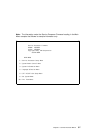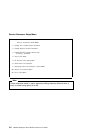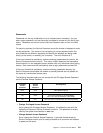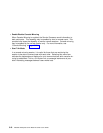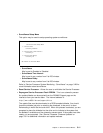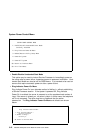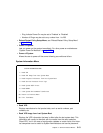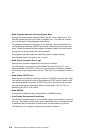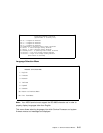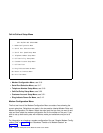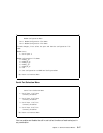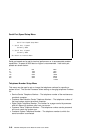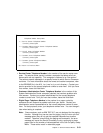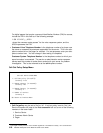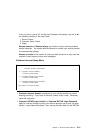Read Progress Indicators from Last System Boot
Displays the boot progress indicators (check points), up to a maximum of 100,
from the system boot prior to the one in progress now. This historical informa-
tion may be useful to help diagnose system faults.
The progress indicators are displayed in two sections. Above the dashed line
are the progress indicators (latest) from the boot that produced the current ses-
sions. Below the dashed line are progress indicators (oldest) from the boot pre-
ceding the one that produced the current sessions.
The progress indication codes are listed top (latest) to bottom (oldest).
Use the posted code indicated by the <-- arrow.
Read Service Processor Error Logs
Displays error conditions detected by the Service Processor.
The time stamp in this error log is Coordinated Universal Time (CUT), a.k.a.
Greenwich Mean Time (GMT). AIX error logs have more information available
and are able to time stamp with local time. See 3-33 for an example of the error
log.
Read System POST Errors
Selecting this item lets you review the results of the POST (Power-On Self Test).
Your server may be able to start in the presence of POST errors if there is suffi-
cient working system resources. If POST errors occur during start-up, this error
log when used with the diagnostics helps to isolate faults. See 3-34 for an
example of the POST error screen.
Read NVRAM
Displays Non-Volatile Random Access Memory (NVRAM) content.
View System Environmental Conditions
The Service Processor reads all environmental sensors and reports the results to
the user. This option is most useful when surveillance fails, as it allows the user
to determine the environmental conditions that may be related to the failure.
The following is an example of system environment conditions:
3-14 RS/6000 Enterprise Server Model H Series User's Guide




